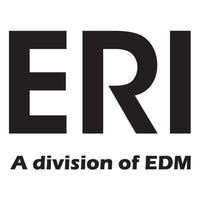If you are an ultrasound user, you're probably familiar with thermal paper. This type of paper is an invention from the past century created in the mid-1960s by Texas Instruments, who were the pioneers in developing this option because they had previously made a thermal print head into their computer terminals.
The main end for this type of material was to be used in businesses and commercial applications like adding machines, cash registers, and credit card terminals. Nevertheless, even though that’s how most people know thermal paper, it’s also used in the medical field, especially for imaging purposes.  Thermal paper is very different from other types. The dye of this paper is within it, which means that when parts of it are heated with a thermal printer, the "ink" melts and releases the dye -which is usually (but not limited to) black,- to reproduce an image.
Thermal paper is very different from other types. The dye of this paper is within it, which means that when parts of it are heated with a thermal printer, the "ink" melts and releases the dye -which is usually (but not limited to) black,- to reproduce an image.
The biggest advantage of thermal paper and thermal printing techniques, in general, is that when you use the right products, the print you get will be durable and long lasting. This is a great feature to keep in mind, especially for the healthcare field, considering how important medical records are for patients and medical imaging professionals.
Another big benefit of thermal printing is that you don’t need ink to produce the images. As a result, thermal printers are less complex and more durable, which makes them a great addition for mobile medical stations that include ultrasound technology such as point of care ultrasound (POCUS).

Ultrasound Thermal Paper
The paper used for medical imaging purposes is also known as video printer paper or sonography paper. It's made with layers of different materials that create the final product able to respond to heat. Its structure can be separated into layers: a protective coat, another protective coat, a thermal coat, a synthetic paper (base material), and a back coat.
The first layer works as the base. The next layers can include different protective layers that secure that first base against heat and make it smoother and uniform. After these, the next layer is the thermal one. This might be the most important one because it's the one that contains the print materials. Finally, the last layers and back coat are meant to protect the thermal coat for its optimal functioning.
There are different types of ultrasound paper. They come in a wide variety of sizes and shapes. They can be divided into three grade categories: standard, high density, and high gloss.
The difference between these is that standard and high-density papers have a structure followed by: back coat, synthetic paper, thermal coat, and overcoat. On the other hand, high gloss consists of synthetic paper, thermal coat, overcoat, gross coat, and head cleaning coat. This composition guarantees longer image durability with a polished finish.
Sony has a variety of papers where you can see each one’s features and differences. The most popular models are the Sony UPP-110S (standard), Sony UPP-110HD (high density) and Sony UPP-110HG (high gloss). These products are high in demand because of their quality, however there are other brands available.
Depending on how each manufacturer develops their papers, they will have different quality and durability when compared to other brands. However, the universal parameters to test the quality of ultrasound papers are the greyscale dynamicity and wetfold.
Greyscale comparison is essential for the paper to be able to reproduce the proper image shades and provide an accurate image, especially for diagnostic purposes. The different densities in a body are translated as various shades of greys, so the wider the range of greys a paper can represent, the better for the sonographer and the patient.
Moreover, a wetfold is used to test the paper's resistance to humidity. Lower quality papers react by becoming curly when exposed to humid environments. On the contrary, high-quality papers tend to maintain their shape. This step in quality control is crucial to ensure their durability.
The Importance of Ultrasound Paper in the Printing Process
A printed ultrasound image is the last step of an examination. In order to get there, you need to first follow a process where you will be able to identify what you want to reproduce and then capture it in the best angle possible that allows you (and most importantly nowadays, patients) to appreciate the subject of study.
Having a high-quality ultrasound print will depend on the quality of the paper. Still, it also depends on the previous steps followed from the imaging professional experience, to the quality of the printer and its compatibility with the print material.
From ERI, we highly recommend ultrasound users to follow the instructions of their medical imaging printers to ensure they can get the most out of them using the right products. After you know what exact type of paper to use on your printer device (this includes type, size, brand, etc.), you will have half of the job done.
Once you capture the image you want, the heating elements in the printer head will make the special dye in the paper appear and reproduce that image on the paper. Depending on the type of paper you use, you will have a different amount of durability that goes from seven years (for standard and high-density papers) to ten years (for high gloss papers) as a minimum.

An ultrasound print can be a helpful resource for patients and their records, especially if they are under continuous treatment over time. But they also represent a source of memories for those who want to keep a physical souvenir of their pregnancy in 3D/4D facilities and gynecology offices dedicated to pregnant women and their families.
Whatever the final goal is, having the right equipment will guarantee an elevated experience for your patients or clients. Fortunately, backed by EDM Medical Imaging Solutions' 30 years of experience, ERI has created a wide catalog with different solutions for ultrasound users like you.
From radiology displays to visualize accurate and clear images, to medical printers with the ultimate technology to reproduce reliable pictures, and the best media papers to provide your patients and clients with long archival life for medical purposes or personal use, ERI has it all with the best quality and the most competitive prices in the market.

